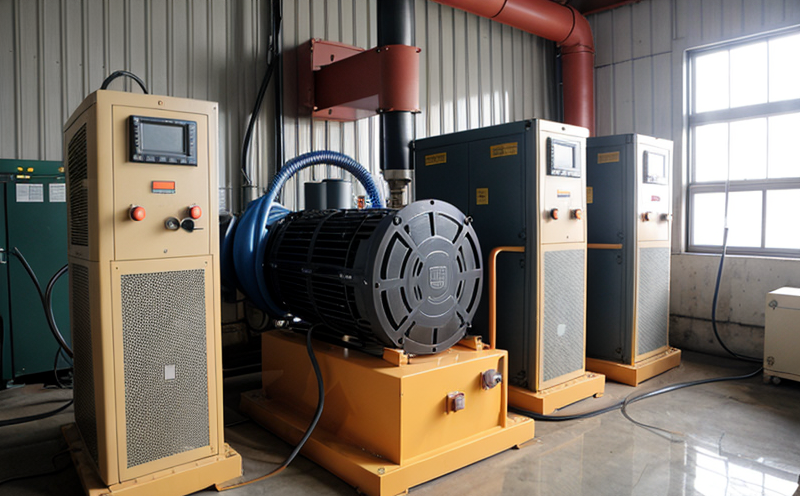ASTM D5291 Carbon, Hydrogen, Nitrogen Testing of Fuels
The ASTM D5291 standard provides a standardized procedure for determining the carbon (C), hydrogen (H), and nitrogen (N) contents in fuels. This method is critical in the power and utilities testing sector as it helps ensure that fuel quality meets regulatory requirements and operational standards.
Understanding the elemental composition of fuel is essential for optimizing combustion processes, reducing emissions, and ensuring efficient energy conversion. The test involves precise measurement techniques to determine these key parameters accurately. This ensures that fuels are suitable for use in power generation equipment, thereby enhancing reliability and performance.
The testing process typically starts with sample preparation, where the fuel sample is dried under controlled conditions to remove moisture. Once prepared, it undergoes combustion analysis using a high-precision elemental analyzer capable of detecting trace amounts of carbon, hydrogen, and nitrogen. The precision of these measurements directly influences the reliability of the test results.
The importance of ASTM D5291 cannot be overstated in today's regulatory environment. Compliance with this standard helps power generation facilities meet stringent environmental regulations aimed at reducing air pollutants like CO₂, NOₓ, and VOCs. By accurately measuring the elemental content, operators can adjust fuel formulations to minimize emissions while maximizing efficiency.
Moreover, ASTM D5291 facilitates quality control within R&D departments by providing a consistent methodology for evaluating new fuel blends or additives. This ensures that any changes made do not compromise existing performance metrics but instead enhance them where possible. Compliance officers benefit from this standardized approach as it provides clear guidelines on what constitutes acceptable fuel compositions under various conditions.
In practical terms, accurate knowledge of the elemental composition allows power plants to operate more efficiently by optimizing combustion processes. For instance, understanding the hydrogen content helps in determining the optimal air/fuel ratio for complete combustion, thus reducing waste and increasing overall system efficiency. Similarly, knowing the nitrogen content aids in predicting potential issues related to NOₓ formation during combustion.
The ability to perform ASTM D5291 tests accurately also supports procurement decisions by offering insights into supplier performance. If a particular fuel consistently fails to meet specified elemental composition criteria, it raises concerns about its quality and suitability for use within specific power generation equipment.
Applied Standards
| Standard | Description |
|---|---|
| ASTM D5291-18 | This standard specifies the procedure for determining the carbon, hydrogen, and nitrogen contents in fuels by combustion analysis. |
| ISO 4376-1:2010 | An international standard that describes methods for sampling solid hydrocarbon fuel oils and other combustible materials intended for use as liquid fuels or feedstocks. |
| EN ISO 5871:2009 | This European standard outlines the requirements for analyzing the volatile matter content in coal, coke, and related products by means of carbonization followed by ignition. |
Why Choose This Test
The ASTM D5291 test is chosen primarily due to its reliability and precision. Using this standard ensures that all tests conducted are consistent, replicable, and comparable across different laboratories and facilities worldwide.
For quality managers looking at long-term sustainability goals, the data provided by these tests can be invaluable in making informed decisions regarding fuel sourcing and usage. Compliance officers find value in knowing that they adhere strictly to recognized international standards, which helps build trust with regulatory bodies.
R&D engineers appreciate the detailed insights gained into new fuel formulations' performance characteristics. By leveraging ASTM D5291 results early on in development cycles, they can identify potential problems before committing significant resources towards production scale-up or commercial release.
For procurement teams involved in selecting optimal suppliers for their needs, this test provides a robust framework against which to evaluate vendors' products objectively. It offers unbiased comparisons based solely on objective measurements rather than subjective assessments alone.





